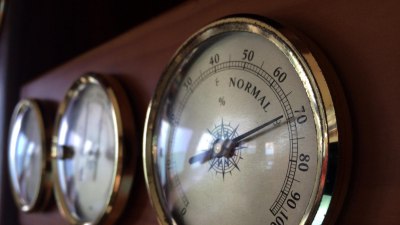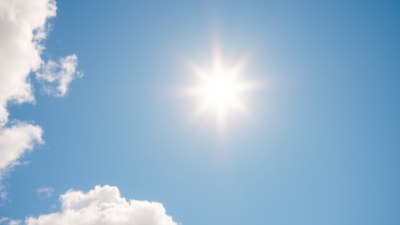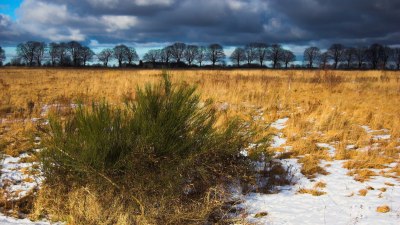What Causes Sudden Gusts on Otherwise Calm Days
Explore the meteorological reasons behind sudden gusts on calm days, including turbulence, local effects, and atmospheric conditions.

Image by eberhardgross1 on Freepik
Sudden gusts of wind on calm days often catch people by surprise. You might be enjoying a still afternoon when a brief, strong puff of wind sweeps through, rustling leaves and rattling windows. These gusts, which seem to appear out of nowhere, have fascinated meteorologists and casual observers alike. Understanding the causes behind these unexpected gusts involves exploring atmospheric dynamics, local geography, and weather phenomena.
At its core, wind is the movement of air from areas of high pressure to low pressure. When the atmosphere is calm, the pressure gradients are weak, resulting in gentle or negligible wind flows. Despite this apparent stillness, the atmosphere above may not be entirely stable or uniform. Variations in temperature, pressure, and terrain can create localized disturbances that trigger sudden gusts.
Atmospheric Turbulence and Gusts
Turbulence is one of the primary causes of gusts on otherwise calm days. It arises when the smooth flow of air is disrupted by obstacles or by instabilities within the air mass itself. In the lower atmosphere, surface friction with the ground and objects such as buildings, trees, and hills disturbs the laminar flow, creating gusts when this turbulent air reaches the surface.
These turbulent eddies form on small scales and can intensify due to solar heating during the day. When the sun heats the Earth's surface unevenly, pockets of warm air rise quickly, mixing with cooler air above and generating turbulence. Even if the overall wind speed is low, this vertical mixing can cause sudden horizontal gusts.
Moreover, convective turbulence, which is associated with rising thermals, can lead to changing wind speeds at surface level. These vertical air movements translate into horizontal gusts when the turbulent eddies descend or collide with other air masses.
Local Topography and Wind Channeling
Geography plays a significant role in gust generation. Hills, valleys, urban structures, and forests can affect air movement in complex ways. Valleys can channel cool air at night, which, when it flows downhill as a drainage wind, may suddenly intensify creating gusts in localized areas.
Similarly, buildings can cause wind to accelerate as air is funneled through narrow streets or between tall structures, a phenomenon known as the Venturi effect. On calm days, even a light ambient breeze can be amplified significantly in such urban canyons, resulting in sudden gusts at street level.
Forests and vegetation can both dampen and sometimes promote gustiness. While dense tree canopies reduce wind speed near the ground, edges of clearings or broken canopy areas experience sudden changes in wind as air flows over and around these obstacles, generating turbulent gusts.
Temperature Differences and Microclimates
Temperature variations create microclimates that contribute to gusty conditions even on calm days. For example, coastal regions often experience land and sea breezes caused by differential heating between the landmass and adjacent water bodies. During daytime, warm land heats the air above it, causing it to rise and allowing cooler air from the sea to move in, which can appear as sudden gusts.
Similarly, urban heat islands—areas where human activities cause higher temperatures—alter local wind behavior. Warm air rising from heated city surfaces can cause circulations that lead to short bursts of wind, appearing as gusts amidst otherwise still air.
Thermal gradients created between shaded and sunlit areas can also generate localized flows of air. As the sun moves, pockets of warm air develop and dissipate, causing gusty air movements on calm afternoons.
Weather Fronts and Subtle Changes in Pressure
Even when the weather seems calm at the surface, atmospheric pressure changes at higher altitudes can trigger surface gusts. Approaching weather fronts, such as cold fronts, often bring sudden wind shifts and gusts ahead of the main weather system.
Though these fronts might be far away or the main weather event not apparent, subtle pressure gradients can create brief gusty periods. If a cold front is weakening or moving slowly, the stable surface conditions can experience short gusty bursts as air responds to shifting pressure zones aloft.
Similarly, gravity waves—oscillations in the atmosphere caused by disturbances such as mountain ranges—can propagate downward, inducing gusts at ground level. These waves break in the lower atmosphere, causing brief turbulent wind bursts.
Thunderstorm Outflows and Other Convective Events
Small-scale convective events, even if they don’t develop into full storms, can produce sudden gusts. Downdrafts from thunderstorms, known as outflow boundaries or gust fronts, are dense, cool air that rushes outward from a storm. These outflows can travel miles from the parent storm and produce sudden strong winds on calm days.
Even isolated convective clouds or heat-driven thermals may cause small downdrafts that reach the ground and cause brief gusts. These phenomena are common in summer afternoons when the atmosphere is primed for convection but full storm development does not occur.
The Role of Surface Roughness and Vegetation
Surface roughness refers to the texture of the Earth's surface, including natural and artificial features. Areas with high surface roughness—such as forests, cityscapes, and mountainous terrain—disrupt airflow more than flat, smooth surfaces like open water or plains.
On calm days, the wind profile near the surface is heavily influenced by roughness elements. When the prevailing wind speed is low, slight changes in flow around obstacles cause turbulent bursts that manifest as gusts. For instance, a light breeze turning around a large tree or building can produce localized gusts stronger than the ambient wind speed would indicate.
Vegetation, particularly tall grass and trees, flexes with the wind and can cause variations in airflow velocity. The movement of leaves and branches not only adds to mechanical turbulence but can slightly modify wind gust characteristics.
Human Activities and Mechanical Turbulence
Human-made structures and activities contribute to turbulent wind patterns and gusts on calm days. Construction cranes, towers, and vehicles can disturb local airflow, producing gusty conditions in their vicinity. For example, large trucks moving on open roads can generate transient gusts that might be felt a short distance away.
Industrial sites with tall stacks and buildings often create wind shadows and vortices. These turbulent flows, combined with natural wind patterns, may cause unexpected gusts in areas that are otherwise calm.
Atmospheric Boundary Layer and Stability
The atmospheric boundary layer—the lowest part of the atmosphere influenced by the Earth's surface—plays a key role in gust formation. Its turbulence characteristics depend on the stability of the air. On calm days, the boundary layer may be stable (suppressing turbulence) or unstable (promoting turbulence), impacting gust occurrence.
An unstable boundary layer caused by daytime heating fosters vertical mixing, which leads to intermittent gusts as turbulent eddies are transferred downward. Conversely, a stable layer, usually present during night and early morning under clear skies, limits vertical movement, reducing gust frequency.
Transitions between stable and unstable boundary layers during dawn or dusk can also cause sudden changes in wind behavior, resulting in gusts as the atmospheric structure adjusts.
Gravity Waves and Mountain Wave Influences
In mountainous regions, gravity waves significantly influence sudden gusts. When stable air flows over a mountain range, it can form oscillations on the lee side, called mountain waves. These waves create areas of upward and downward motion and can cause strong localized gusts, sometimes known as downslope windstorms or foehn winds.
Though these phenomena are more common near mountains, gravity waves can also occur in flatter terrain due to atmospheric instabilities and produce localized gusts. Pilots frequently encounter these conditions as turbulence during flight.
Urban Heat and Wind Patterns
Urban areas generate unique wind patterns due to their heat retention and physical structures. The heat absorbed by buildings and roads during the day is slowly released, creating warm pockets of air that rise and generate localized convective currents. These currents can interact with prevailing winds to produce gusts.
Additionally, the complex layout of streets and buildings creates multiple pathways for channeling airflow. On a calm day, a gentle breeze may be silently moving at a height, but as it descends through these pathways, it accelerates, resulting in noticeable gusts near ground level.
Sudden Gusts and Weather Forecasting Challenges
Forecasting sudden gusts on otherwise calm days presents challenges. Because these gusts often depend on local turbulence, small-scale temperature differences, or subtle topographic influences, they may not be captured well in broad-scale weather models.
Meteorologists rely on high-resolution models, surface observations, and local knowledge to predict where gusts might occur. Understanding patterns such as convective potential, terrain-induced flows, or approaching fronts helps forecasters anticipate gusty conditions that might arise unexpectedly.
Protective Measures and Practical Implications
Although sudden gusts are generally brief, they can have practical implications. For outdoor activities such as sailing, cycling, or construction work, unexpected gusts may affect safety and comfort. Knowing the typical conditions in an area and monitoring weather updates can help anticipate gusty periods.
In agriculture, sudden gusts can damage crops, especially when combined with dry conditions. Urban planners and engineers often design buildings and infrastructure to withstand turbulent wind conditions, including gusts.
Sudden gusts on otherwise calm days arise from a complex interplay of atmospheric turbulence, local terrain, temperature variations, and weather system influences. Turbulence generated by surface friction, thermal effects, urban and natural landscape features, and subtle changes in atmospheric pressure all contribute to bursts of wind that disrupt the stillness.
While these gusts may seem unpredictable, understanding the mechanisms behind them offers valuable insights. Continuing advances in meteorological technology and modeling improve our ability to foresee and adapt to these fleeting yet impactful wind events.











